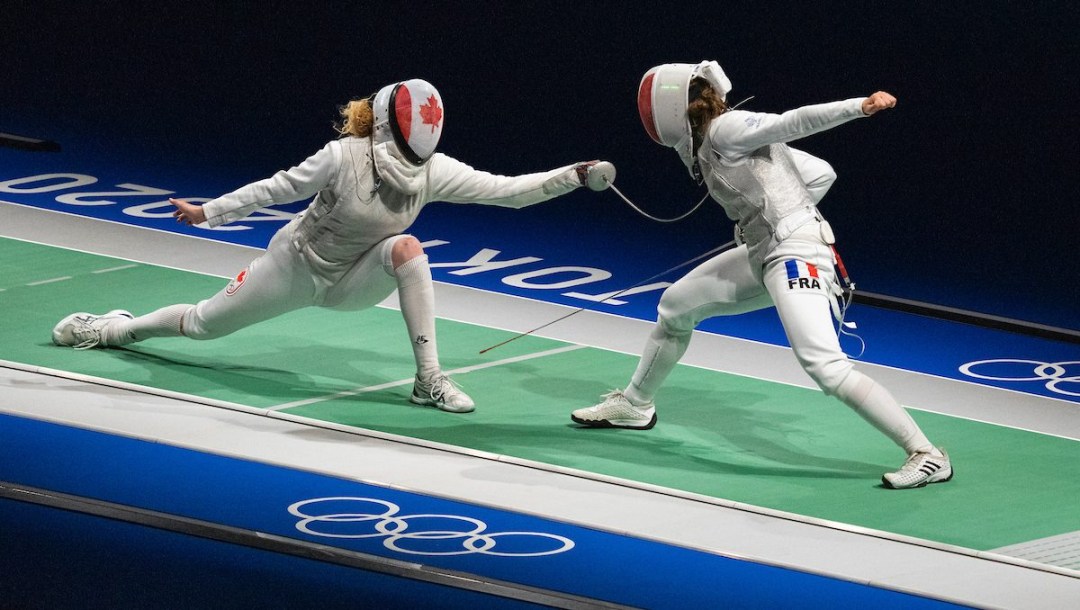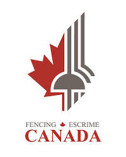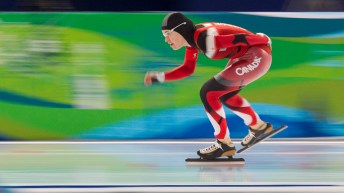Fencing
Team Canada Medal Count
Sport Overview
Fencing at Paris 2024
Venue: Grand Palais
Competition Dates: July 27-August 4 (Days 1-9)
Events: 12 (6 men, 6 women)
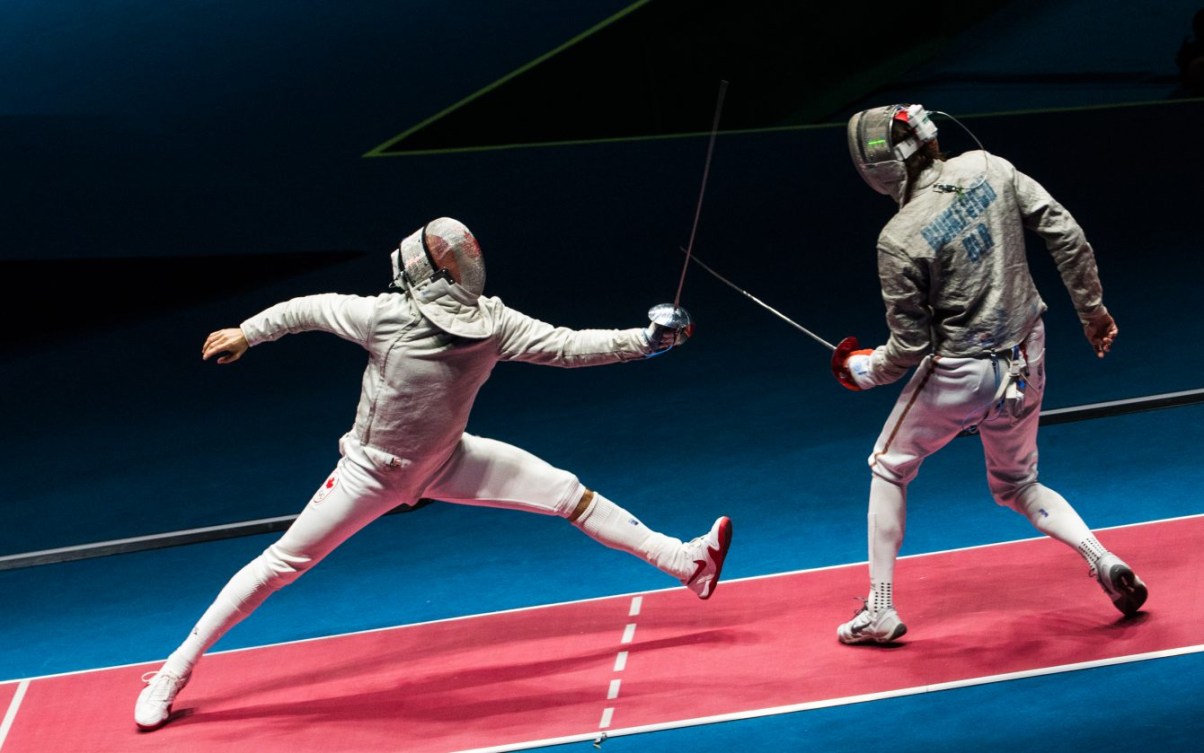
Fencing is an exercise based on speed and skill. This classic sport brings a certain artistic approach of precision and movement with a rich history dating back to medieval times.
There are 12 events on the Olympic program, with men’s and women’s individual and team events for each of the three weapons.
Foil: The foil is a light, thrusting sword. Points are scored by landing the tip of the flexible rectangular blade within the torso area of the opponent’s body (shoulders to groin, front and back). The arms, neck, head and legs are not part of the target area.
Épée: The épée is a dueling sword that is slightly heavier and more tapered than the foil. Points are scored only by the tip of the triangular sword. With the largest target area of all the fencing events, points can be scored by placing the tip anywhere on an opponent’s body, including the head and feet.
Sabre: The sabre was originally a military sword intended for thrusting and cutting. Points can be scored with the blade’s front edge, the last one-third of its back edge, or the tip. The target area is from the bend of the hips (front and back) to the top of the head.
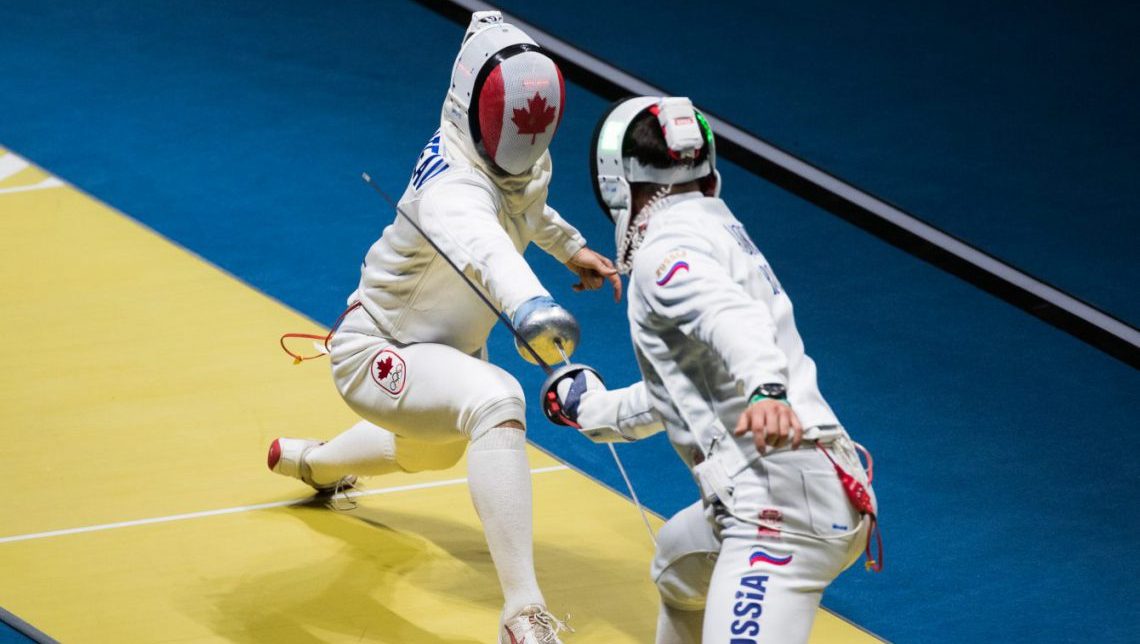
All fencing events are held in direct-elimination format. Individuals and teams progress through a bracket until the semifinal winners compete for gold and silver while the semifinal losers compete for bronze.
In the individual events, each bout is nine minutes long, divided into three 3-minute periods, with a one-minute break between any two periods. A bout ends when one fencer scores 15 points (one point for every touch) on their opponent or time runs out and the fencer with the most points is the winner.
Each team match consists of nine bouts as each of the three fencers on one team faces each of the three fencers on the other team once. Each bout in a team match lasts a maximum of three minutes. The winner is the first team to reach 45 points or the team with the most points at the end of the nine bouts.
Canada’s Olympic History (Pre-Paris 2024)
Canada has yet to win an Olympic medal in fencing. There have been two fourth-place finishes, in men’s team epée at Los Angeles 1984 and in women’s team epée at Athens 2004. Canada placed fifth in women’s team foil at Tokyo 2020 after advancing to the quarterfinals. The best results from the sabre teams were seventh place finishes by the men at Los Angeles 1984 and the women at Beijing 2008.
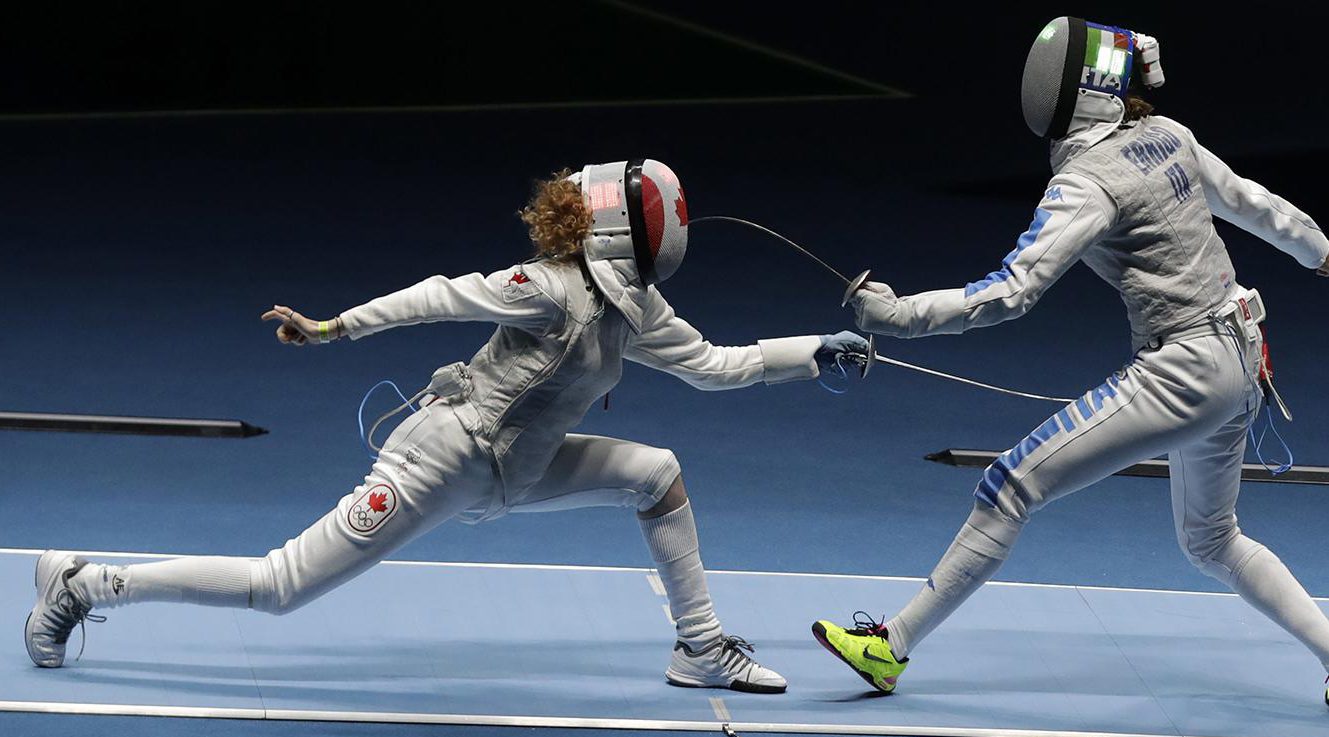
Canada’s best individual result in any fencing event was achieved by Eleanor Harvey at Rio 2016, where she placed seventh in the women’s foil. She had advanced to the quarterfinals by defeating top seed and defending Olympic silver medallist Arianna Errigo of Italy in the round of 16. Kelleigh Ryan was also a quarterfinalist in women’s individual foil at Tokyo 2020, finishing eighth overall.
Olympic Fencing History
Fencing is among the few sports that have been included at every edition of the modern Olympic Games dating back to Athens 1896. For years, the sport was only open to men, who competed in all three weapons in individual and team events well before women could.
Women first competed in Olympic fencing at Paris 1924, but only in individual foil. Women’s team foil was added at Rome 1960. It was 36 years later at Atlanta 1996 that women’s individual and team epée events were added. Women first competed in individual sabre at Athens 2004 with team sabre following at Beijing 2008.

